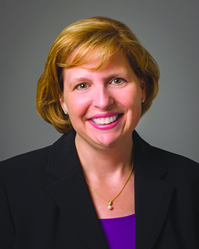Passive lectures where instructors presented information available nowhere else has given way to more active, more engaged, and more effective learning techniques.

“There is such easy access to information today that what we teach is not as much about the foundational science but the application of the science,” said Beth L. Jonas, MD, Associate Professor of Medicine and Director of the Rheumatology Fellowship Training Program at the University of North Carolina at Chapel Hill School of Medicine. “New concepts and new technologies are changing what medical school and medical education looks like, and rheumatologists are in the forefront.”
Dr. Jonas will explore some of those changes during the annual Medical Education Year in Review clinical symposium today from 1:00 – 2:00 pm in room 143A. Not only are the roles of educational scholarship and teaching techniques evolving quickly, rheumatologists are some of the best-positioned clinician-educators to guide and lead the shift.
One of the most obvious changes is the move to an integrated curriculum, Dr. Jonas said. Rather than teaching basic science in isolation, then moving on to clinical science, normal and abnormal are woven together with a focus on the application of knowledge. Even core areas such as physiology have been integrated to present normal physiology alongside abnormal physiology.
“This kind of integration of related topics creates a very rich environment to teach rheumatology,” she said. “Because our specialty is robust in both the basic science foundations and in clinical applications, this shift in education creates an opportunity for rheumatologists to be more involved in the development of teaching materials and the dissemination of rheumatology knowledge in medical schools.”
Educational research in nonmedical disciplines has produced innovations such as the flipped classroom. Instead of sitting through lectures to learn the basic facts and concepts, students learn the basic materials on their own, then come to class prepared to discuss the practical applications of that knowledge.
Both undergraduate and gradulate medical education continues to evolve. Electronic resources are becoming the standard for teaching both inside and outside the classroom. And professional development for medical educators is booming.
“Medicine comes late to this game compared to law school, business school and other sciences,” Dr. Jonas said. “We are catching up and seeing just how much we can learn from the examples of other educational areas.
“There is a huge amount of professional development for teachers, physicians, PhDs who have taught medicine in a certain way for many years who are now learning all of these new educational techniques and technologies. We do as much professional development in medical school as we do teaching of medical students.”
One of the most important changes brought about by integrated curricula, flipped classrooms and the overall emphasis on application of knowledge has been the growing role of the clinician-educator. As clinical knowledge and clinical skills gain in importance at all levels of medical education, clinician-educators have emerged as the most skilled and the most sought-after leaders.
“There is a very positive take on the changing world of medical education and that is realizing that there is already a very strong culture of the clinician-educator in rheumatology compared to other medical specialties,” Dr. Jonas said. “We are very well positioned to be leaders in medical schools, in residency programs, in fellowship programs because we already understand and use the clinician-educator model. Anybody who has a learner in their practice or in their clinic, or is interested in how we grow our specialty will be very interested in what we present at this symposium.”
